Garden Fencing
Discover the best garden fencing options in Wood Green, including types, benefits, maintenance tips, local areas, and FAQs to enhance your outdoor space effectively.
Get a Quote
Enhancing Your Outdoor Space with Garden Fencing in Wood Green

Transforming your garden into a beautiful and functional space starts with the right fencing. In Wood Green, garden fencing not only adds privacy and security but also enhances the aesthetic appeal of your property. Whether you’re looking to create a cozy nook or define your garden’s boundaries, selecting the appropriate garden fencing is crucial.
Wood Green offers a variety of garden fencing options to suit different styles and budgets. From traditional wooden fences to modern metal designs, there’s something for every homeowner. Understanding the types, benefits, and installation processes can help you make an informed decision.
In this article, we’ll explore the best garden fencing solutions available in Wood Green, providing you with the information you need to create a stunning outdoor area.
Types of Garden Fencing Available in Wood Green
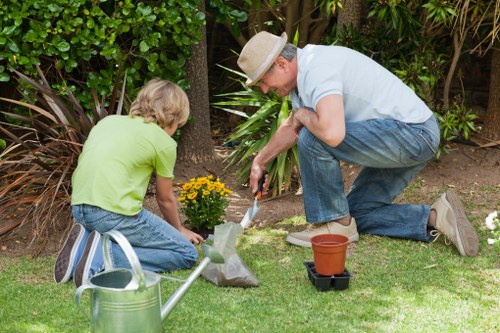
Choosing the right type of garden fencing depends on your specific needs, the style of your home, and your budget. Here are some popular options available in Wood Green:
1. Wooden Fencing
Wooden fences are a classic choice, offering a natural and timeless look. They are versatile and can be customized to fit any garden design.
Pros:
- Natural appearance
- Customizable
- Good for privacy
Cons:
- Requires maintenance
- Can be susceptible to weather damage
Popular wood types include pine, cedar, and oak, each providing different levels of durability and aesthetics.
2. Metal Fencing
Metal fences, such as wrought iron or aluminum, offer a sleek and modern look. They are highly durable and require minimal maintenance.
Pros:
- Long-lasting
- Low maintenance
- Elegant design
Cons:
- Higher initial cost
- Limited privacy
Metal fencing is ideal for those who prioritize durability and a contemporary style.
3. PVC Fencing
PVC or vinyl fencing is a cost-effective and low-maintenance option. It’s resistant to moisture and doesn’t warp or splinter, making it a practical choice for many homeowners.
Pros:
- Affordable
- Easy to clean
- Resistant to weather
Cons:
- Less natural look
- Can become brittle over time
PVC fencing is perfect for those seeking a durable and easy-to-maintain solution.
4. Composite Fencing
Composite fencing combines wood and plastic materials to create a fence that looks natural but requires less maintenance. It’s an eco-friendly option that offers the best of both worlds.
Pros:
- Environmentally friendly
- Low maintenance
- Durable
Cons:
- Higher cost than some materials
- Limited color options
Composite fencing is ideal for environmentally conscious homeowners looking for a sustainable option.
Benefits of Installing Garden Fencing in Wood Green
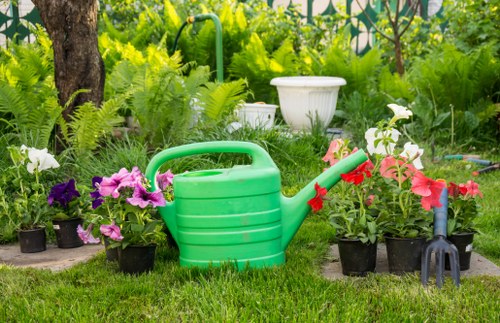
Installing garden fencing offers numerous benefits that enhance both the functionality and beauty of your outdoor space. Here are some key advantages:
1. Privacy and Security
A well-installed fence provides privacy, allowing you to enjoy your garden without worrying about passersby. It also adds an extra layer of security, deterring unwanted visitors and protecting your property.
2. Aesthetic Appeal
Garden fencing can significantly enhance the visual appeal of your home. With a variety of styles and materials available, you can choose a fence that complements your garden’s design and your personal taste.
3. Boundary Definition
Fencing clearly defines the boundaries of your property, preventing disputes with neighbors and ensuring that your garden space is respected.
4. Protection for Plants and Pets
A sturdy fence can keep pets within your garden and prevent them from wandering off. It also protects your plants from animals and pests.
5. Increased Property Value
Quality garden fencing can enhance your home's curb appeal, potentially increasing its market value.
Choosing the Right Garden Fencing Contractor in Wood Green

Selecting a reliable and experienced fencing contractor is essential to ensure that your garden fence is installed correctly and lasts for years to come. Here are some tips for choosing the best contractor in Wood Green:
1. Research and Reviews
Start by researching local contractors and reading reviews from previous customers. Look for companies with positive feedback and a track record of quality work.
2. Experience and Expertise
Choose a contractor with extensive experience in garden fencing. They should be knowledgeable about different materials and styles, and able to offer expert advice.
3. Portfolio of Work
Review the contractor's portfolio to see examples of their previous projects. This will give you an idea of their workmanship and the types of fences they specialize in.
4. Transparent Pricing
Ensure that the contractor provides clear and detailed estimates. Avoid companies that are vague about costs or have hidden fees.
5. Licensing and Insurance
Verify that the contractor is properly licensed and insured. This protects you in case of any accidents or damages during the installation process.
6. Warranty and After-Sales Service
A reputable contractor should offer warranties on their work and be available for any follow-up services you may need.
7. Communication and Professionalism
Choose a contractor who communicates clearly and professionally. They should be responsive to your inquiries and willing to address any concerns you have.
Maintenance Tips for Wooden Garden Fences
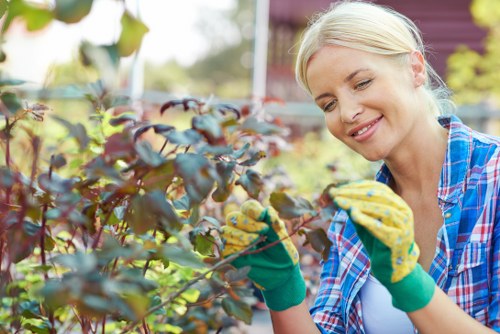
Wooden fences require regular maintenance to keep them looking their best and to prolong their lifespan. Here are some maintenance tips to consider:
1. Regular Cleaning
Clean your wooden fence at least once a year to remove dirt, mold, and mildew. Use a pressure washer or a mixture of water and mild detergent for effective cleaning.
2. Sealing and Staining
Apply a sealant or stain every few years to protect the wood from moisture, UV rays, and pests. This also helps maintain the fence's color and appearance.
3. Inspect for Damage
Regularly inspect your fence for signs of damage, such as rot, cracks, or loose boards. Address any issues promptly to prevent further deterioration.
4. Preventing Pests
Keep an eye out for signs of pests, such as termites or carpenter ants. Use appropriate treatments to protect your fence from infestations.
5. Trimming Surrounding Vegetation
Trim any plants or trees near the fence to prevent them from causing damage or putting stress on the structure.
6. Reinforcing Weak Areas
Reinforce any weak or unstable areas of the fence to ensure its structural integrity.
7. Annual Checks
Conduct an annual check-up of your fence to assess its condition and perform necessary maintenance tasks.
Local Relevance: Nearby Areas to Wood Green for Garden Fencing Services
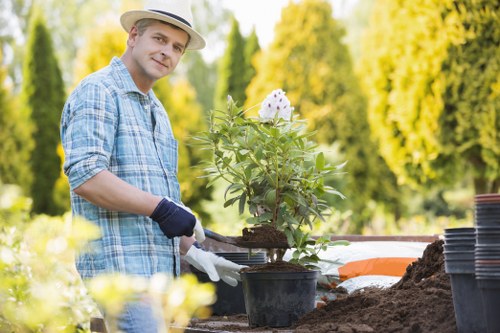
Wood Green is surrounded by several charming neighborhoods and areas that also benefit from excellent garden fencing solutions. Here are some of the closest areas to Wood Green where you can find top-notch garden fencing services:
- Turnpike Lane – Just north of Wood Green, Turnpike Lane offers diverse fencing options to complement its vibrant community.
- Camerons Grove – A short distance away, Camerons Grove residents can access quality fencing materials and expert installation services.
- Arsenal – Known for its proximity to the Emirates Stadium, Arsenal provides reliable garden fencing solutions for sports enthusiasts.
- Finsbury Park – Residents enjoy well-maintained gardens with fencing options tailored to the area’s green spaces.
- Bounds Green – Bounds Green offers a range of fencing styles that cater to both traditional and modern homes.
- Morgan Stanley – A bustling area with a mix of residential and commercial properties requiring versatile fencing options.
- Alexandra Palace – Close to the iconic palace, this area benefits from high-quality fencing services that match its historical charm.
- Hadley Wood – Although slightly further, Hadley Wood provides premium fencing solutions for upscale gardens.
- Stratford – With ongoing development, Stratford offers innovative fencing options to suit new and existing properties.
- Highgate – Known for its affluent neighborhoods, Highgate residents can access luxurious fencing designs.
- Edmonton – Edmonton provides a variety of budget-friendly fencing options suitable for all types of gardens.
- Park Royal – This area offers commercial-grade fencing solutions for businesses and industrial properties.
- Bowes Park – Bowes Park residents enjoy access to environmentally friendly fencing options designed for sustainability.
- Angel – Proximity to central London makes Angel a prime location for trendy and modern fencing styles.
- Pinners – Pinners provides quaint and charming fencing options that enhance the local aesthetic.
Choosing the Right Material for Your Garden Fence
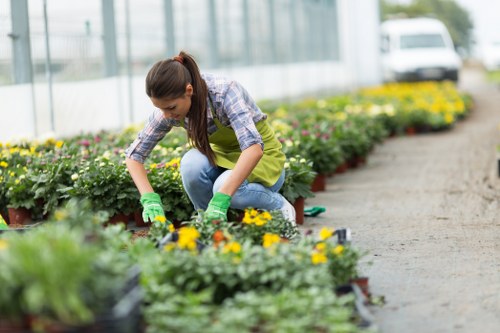
Selecting the appropriate material for your garden fence is essential for ensuring durability, functionality, and aesthetic harmony with your garden. Here are some factors to consider when choosing the right material:
1. Durability
Consider how long you want your fence to last and how much maintenance you’re willing to perform. Materials like metal and composite offer long-lasting solutions, while wood may require more frequent upkeep.
2. Appearance
The material should complement the style of your home and garden. Wooden fences provide a natural look, while metal and vinyl offer modern and sleek designs.
3. Cost
Budget is a significant factor. Wooden fences are generally more affordable upfront, but metal and composite fences may offer better long-term value due to their durability.
4. Installation
Some materials are easier to install than others. PVC fences, for example, are lightweight and simple to install, whereas metal fences might require professional help.
5. Maintenance
Consider the level of maintenance each material requires. Wooden fences need regular sealing and staining, while metal and vinyl fences are easier to maintain.
6. Climate
Think about the climate in Wood Green. Wooden fences can be susceptible to moisture and pests, while metal fences withstand various weather conditions better.
7. Privacy Needs
If privacy is a priority, opt for solid materials like wood or composite that prevent visibility through the fence.
Installing Your Garden Fence: A Step-by-Step Guide

Installing a garden fence can be a manageable DIY project or you can hire a professional. Here’s a basic step-by-step guide to help you understand the installation process:
1. Planning and Measurement
Start by measuring the perimeter of your garden to determine how much fencing material you need. Consider the height and style of the fence you want to install.
2. Choosing Materials
Select the material that best suits your needs based on durability, appearance, and budget. Purchase the necessary materials, including posts, panels, and fixings.
3. Preparing the Area
Clear the area where you’ll be installing the fence. Remove any obstacles and ensure the ground is level to facilitate a smooth installation process.
4. Setting the Posts
Mark the locations for the fence posts, ensuring they are evenly spaced. Dig holes for the posts, typically about one-third of the post’s length should be buried for stability.
5. Installing the Panels
Attach the fencing panels to the posts using appropriate fixings. Ensure each panel is level and securely fixed to prevent movement.
6. Finishing Touches
Once the panels are installed, add any finishing touches such as gates, decorative elements, or additional support structures. Paint or stain the fence if necessary to protect the material.
7. Maintenance
Regularly inspect your fence for any signs of wear and perform necessary maintenance to keep it in good condition.
Cost Factors for Garden Fencing in Wood Green
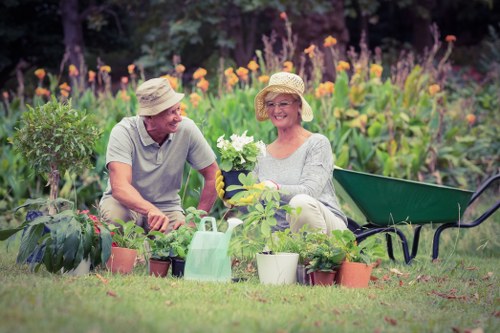
The cost of installing a garden fence in Wood Green can vary widely based on several factors. Understanding these factors can help you budget effectively:
1. Material Choice
The type of material you choose significantly impacts the overall cost. Wooden fences are generally more affordable, while metal and composite fences tend to be pricier.
2. Fence Height and Length
The dimensions of your fence will affect the cost. Taller and longer fences require more materials and labor, increasing the total expense.
3. Design and Style
Complex designs and decorative elements can add to the cost. Simple, straight fences are usually less expensive to install than intricate, patterned designs.
4. Labor Costs
If you hire a professional contractor, labor costs will be a significant part of the overall expense. Experienced installers may charge more but can ensure a high-quality installation.
5. Site Preparation
Preparing the site for installation, such as clearing the area or leveling the ground, can incur additional costs.
6. Accessibility
If your garden is difficult to access, it might require more effort to transport materials and install the fence, leading to higher costs.
7. Permits and Regulations
In some cases, you may need permits to install a fence, especially in certain neighborhoods or if the fence exceeds a specific height. These permits can add to the overall cost.
8. Additional Features
Incorporating features such as gates, lighting, or automation systems will increase the cost of your fencing project.
Environmental Considerations for Garden Fencing
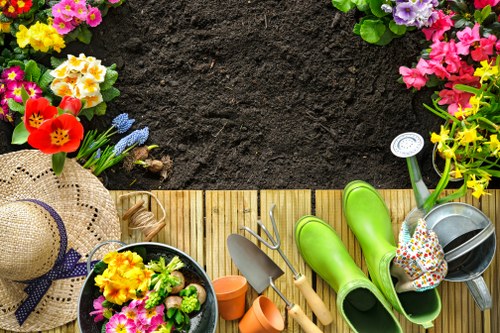
When selecting a garden fence, it's essential to consider the environmental impact of your choice. Here are some factors to keep in mind:
1. Sustainable Materials
Opt for materials that are environmentally friendly, such as sustainably sourced wood or recycled metals. Composite materials made from recycled plastics are also a great choice.
2. Longevity
Selecting a durable material ensures that your fence will last longer, reducing the need for frequent replacements and minimizing waste.
3. Local Sourcing
Choose materials that are sourced locally to reduce the carbon footprint associated with transportation.
4. Low VOC Finishes
If you need to paint or stain your fence, opt for low VOC (volatile organic compounds) finishes to lessen environmental impact.
5. Recyclability
Consider the end-of-life recyclability of the materials you choose. Materials that can be easily recycled contribute to a more sustainable environment.
6. Minimal Impact Installation
Ensure that the installation process minimizes disruption to the surrounding environment, preserving existing plant life and soil integrity.
Best Practices for Maintaining Your Garden Fence
Proper maintenance extends the life of your garden fence and keeps it looking great. Here are some best practices to follow:
1. Regular Inspections
Inspect your fence regularly for signs of damage, such as loose boards, rust, or rot. Early detection allows for timely repairs.
2. Cleaning
Keep your fence clean by removing dirt, debris, and moss. Use appropriate cleaning agents based on the fence material.
3. Repairing Damage
Address any damage immediately to prevent it from worsening. Replace rotten wood, fix loose panels, and treat rust spots promptly.
4. Protective Coatings
Apply protective coatings like paint or stain to wooden fences to shield them from moisture and UV damage. For metal fences, use rust-resistant paint to prevent corrosion.
5. Trimming Vegetation
Keep plants and trees around the fence trimmed to avoid overgrowth and reduce stress on the fence structure.
6. Securing Fencing Panels
Ensure that all fencing panels are securely attached to the posts. Tighten any loose screws or nails as needed.
7. Preventing Pests
Use pest repellents or treatments to protect wooden fences from termites and other wood-boring insects.
8. Weatherproofing
Ensure that your fence is weatherproofed to withstand the elements, especially in areas prone to heavy rain or wind.
9. Seasonal Maintenance
Perform seasonal maintenance tasks, such as sanding rough edges in the spring or applying protective coatings in the fall.
10. Professional Maintenance
For extensive repairs or maintenance, consider hiring a professional to ensure the job is done correctly.
Innovative Garden Fencing Ideas for Modern Homes
Modern garden fencing goes beyond traditional boundaries, offering creative and stylish solutions to enhance your outdoor space. Here are some innovative ideas to inspire your fencing project:
1. Horizontal Slat Fencing
Horizontal slat fences provide a contemporary look, offering clean lines and a sleek appearance. They are perfect for adding a modern touch to any garden.
2. Mixed Material Fencing
Combine different materials, such as wood and metal, to create a unique and eye-catching fence. This approach adds texture and depth to your garden’s design.
3. Living Fences
Incorporate plants into your fence by creating living fences with climbing vines or attaching planters to the fence panels. This adds greenery and a natural feel to your outdoor space.
4. Decorative Panels
Use decorative panels with intricate patterns or designs to make your fence a focal point of your garden.
5. Integrated Lighting
Add LED lighting or solar-powered lights to your fence to create both illumination and ambiance in your garden during the evenings.
6. Colorful Paints and Stains
Experiment with bold colors or ombre stains to give your fence a vibrant and personalized look.
7. Privacy Screens
Use tall, dense fencing screens to create secluded areas within your garden, perfect for relaxation or entertaining.
8. Artistic Features
Incorporate art elements, such as metal sculptures or mosaic tiles, into your fence design to add a touch of creativity.
9. Movable Panels
Install movable fence panels to adjust the layout of your garden space as needed, providing flexibility for different occasions.
10. Recycled Materials
Use recycled or repurposed materials to create an eco-friendly and sustainable fence that also adds character to your garden.
Conclusion: Investing in Garden Fencing for a Beautiful and Secure Wood Green Garden
Choosing the right garden fencing in Wood Green is a significant investment that can enhance the beauty, privacy, and security of your outdoor space. By understanding the different types of fencing available, considering the benefits, and selecting a reputable contractor, you can create a garden fence that meets your needs and complements your home’s aesthetic.
Regular maintenance and thoughtful design choices will ensure that your fence remains a cherished feature of your garden for years to come. Whether you prefer the natural charm of wood, the modern elegance of metal, or the practicality of PVC, there’s a perfect fencing solution waiting for you in Wood Green.
Start planning your garden fencing project today and enjoy the many benefits it brings to your beautiful Wood Green garden.
Frequently Asked Questions
1. What is the average cost of installing a wooden garden fence in Wood Green?
The cost of installing a wooden garden fence in Wood Green can vary depending on the type of wood, fence height, and length. On average, prices range from £40 to £100 per meter, including materials and labor.
2. How long does a metal garden fence last?
Metal garden fences, such as those made from aluminum or wrought iron, can last between 20 to 30 years or more with proper maintenance. Regular cleaning and protective coatings can extend their lifespan.
3. Do I need a permit to install a garden fence in Wood Green?
In Wood Green, you may not need a permit for most garden fences, especially if they are below a certain height (usually 2 meters). However, it’s essential to check with your local council to confirm any specific regulations or restrictions.
4. Can I install a garden fence myself, or should I hire a professional?
While installing a garden fence can be a DIY project, hiring a professional ensures that the fence is installed correctly and meets all local regulations. If you’re not experienced with fencing projects, it might be best to consult with a professional installer.
5. What maintenance does a PVC garden fence require?
PVC garden fences are low-maintenance and generally require only periodic cleaning with soap and water to keep them looking new. Unlike wooden fences, PVC does not need sealing or staining.
Frequently Asked Questions
Our Wood Green garden fencing solutions include timber, vinyl, and metal options, each tailored to enhance your outdoor space. Whether you prefer classic wood or durable metal, our experienced team ensures quality installation. Get in touch with our Wood Green experts for a personalized fencing quote.
Our Wood Green fencing installers are highly trusted professionals with over 10 years of experience. We prioritize reliability and customer satisfaction, ensuring your garden fencing is installed correctly and efficiently. Contact our Wood Green team for trusted fencing services today.
Yes, our Wood Green gardeners are fully certified and insured, including public liability and pesticide handling. We ensure all projects are carried out safely and meet industry standards. Trust our certified Wood Green experts for your garden fencing needs.
Our Wood Green team uses professional gardening methods, including eco-friendly weed control, precise hedge trimming, and specialized tools like ride-on mowers and hedge trimmers. These techniques ensure your garden fencing remains pristine year-round. Contact us for expert fencing maintenance in Wood Green.
You can find licensed garden fencing professionals through our Top Garden Fencing Solutions in Wood Green. Our licensed team is affiliated with reputable bodies like BALI, ensuring high-quality and reliable services. Reach out to our Wood Green experts for licensed fencing professionals.
Yes, we offer affordable garden fencing installation in Wood Green without compromising on quality. Our competitive pricing and tailored solutions ensure you get the best value for your investment. Contact our Wood Green team to receive a free, no-obligation fencing quote.
In Wood Green, we offer eco-friendly fencing materials such as sustainably sourced timber and recyclable vinyl options. Our commitment to environmentally friendly practices ensures your garden fencing is both beautiful and responsible. Get in touch with our Wood Green team to explore eco-friendly fencing solutions.
Our garden fencing specialists in Wood Green have over a decade of experience maintaining local estates and residential gardens. Their expertise ensures precise installation, maintenance, and customization of your garden fencing to meet your specific needs. Contact our experienced Wood Green team today.
Yes, we provide seasonal garden fencing services in Wood Green, including spring lawn prep, summer fencing repairs, autumn leaf clearance, and winter protection measures. Our seasonal expertise ensures your garden fencing remains in top condition year-round. Schedule your seasonal fencing service with our Wood Green team.
Our Wood Green fencing services are accredited by the Royal Horticultural Society (RHS) and the British Association of Landscape Industries (BALI). These accreditations demonstrate our commitment to high standards and professional excellence. Trust our accredited Wood Green team for your garden fencing needs.
Absolutely, our Wood Green garden fencing services offer customization options to suit your style and needs. Choose from various materials, colors, and designs to create a fence that perfectly complements your garden. Contact our Wood Green experts to design your customized garden fence today.
Our Wood Green gardeners utilize professional-grade tools and equipment, including ride-on mowers, hedge trimmers, and eco-friendly weed control systems. These tools ensure efficient and high-quality fencing projects. Trust our well-equipped Wood Green team for all your garden fencing requirements.









